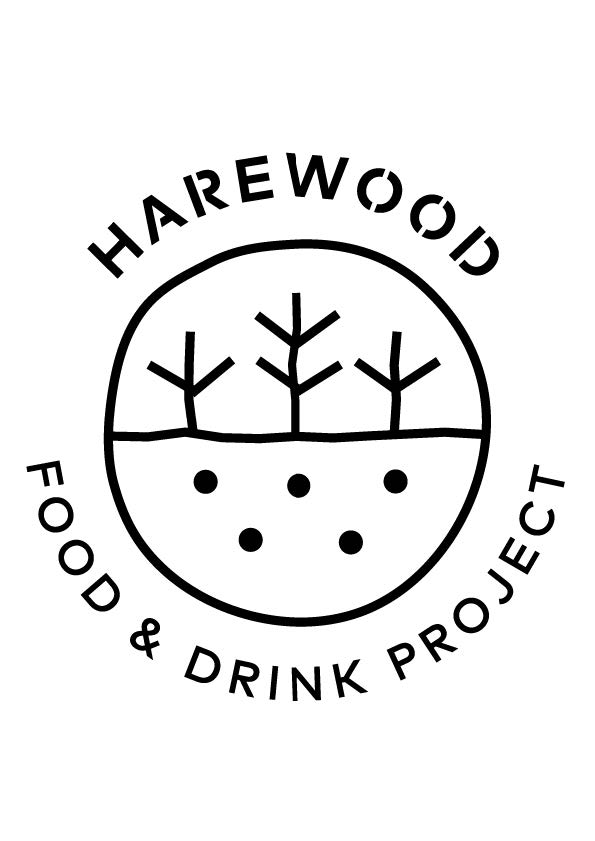
Since March 2020, our friends the Harewood Food and Drink Project have been running the Courtyard and Terrace Cafés, serving up delicious seasonal and local food. Food is synonymous with Harewood House, a place where a fully working Walled Garden has provided fresh produce to the local community and further afield for hundreds of years, including during two wartimes. In this first blog of a new series, Director Eddy Lascelles takes us through the ethos of HFDP, their work at Harewood House and what you can expect from future blogs from Eddy, Executive Chef Josh Whitehead, and other members of the HFDP team – look out for highlights of the season, foodie facts, cooking tips, recipes and more.
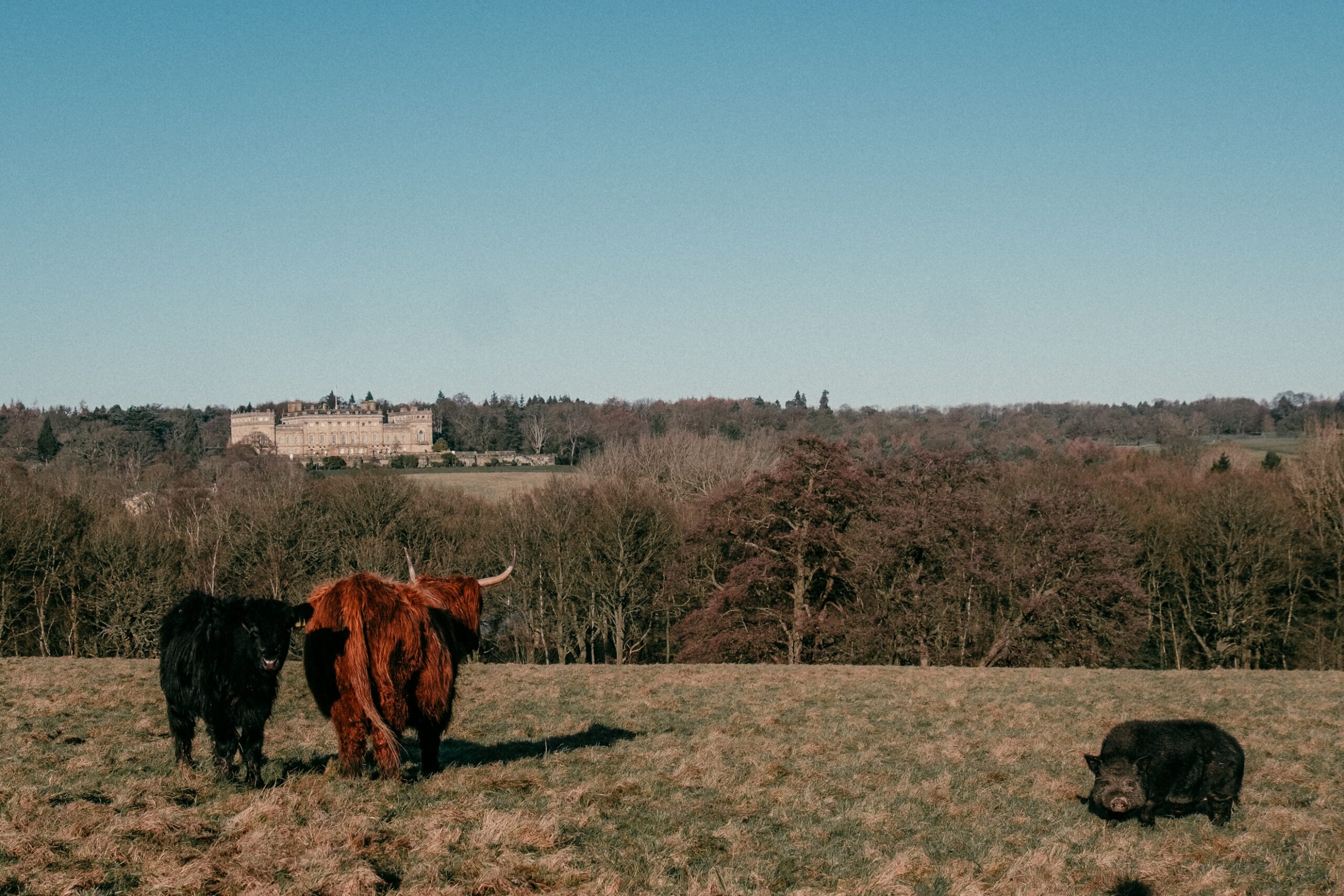
Harewood’s Highland Cattle and Cyril the pig. Photo by Claire McClean
Harewood Food and Drink Project at Harewood House
Harewood Food and Drink Project works closely with Harewood House Trust’s Head Gardener, Trevor Nicholson, and his Walled Garden team, ensuring that we use as much of what’s grown on site as possible. By working closely together, we create circular economies where possible, ensuring that we’re minimising the environmental impact of what you eat when you’re on site. For example, composting raw food waste and repurposing other waste items to enrich the health of the soil, improve Harewood’s habitat and create better growing conditions. Working with Trevor and his team is one of the great joys of our job. His knowledge and passion can’t help but inspire you. Knowing the thought, skill and work that goes in to growing our fruit and vegetables, is the greatest motivation our team of chefs could have to make sure we do these beautiful products justice when they reach your plates.
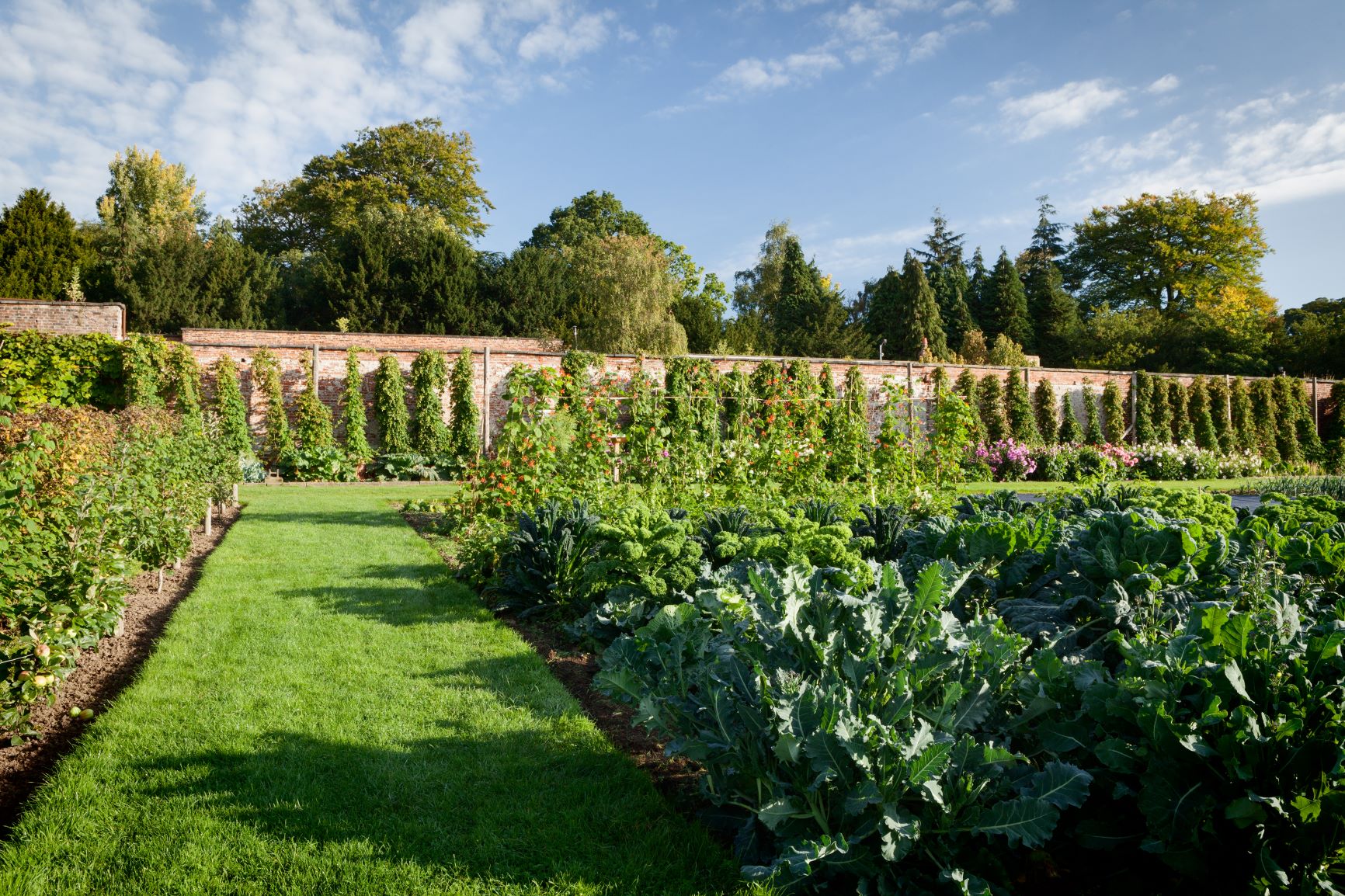
The Harewood Walled Garden
It is our commitment to use produce sourced from Harewood wherever possible, this means fruits, vegetables, herbs and spices from the Walled Garden, meat from Harewood’s livestock, wild foods that are foraged on the Estate, and wild game as well. What we can’t source internally, we work with select local independent artisan suppliers who share our ethos on how food & drink should be done.
We took over the running of the Courtyard Café and Terrace Tearoom on behalf of Harewood House Trust in March this year and we base our approach around ‘the Five S’s’, which underpin our approach to food and what you can expect during your visit to Harewood House:
- Simple
- Seasonal
- Sustainable
- Sourced Locally
- Specials
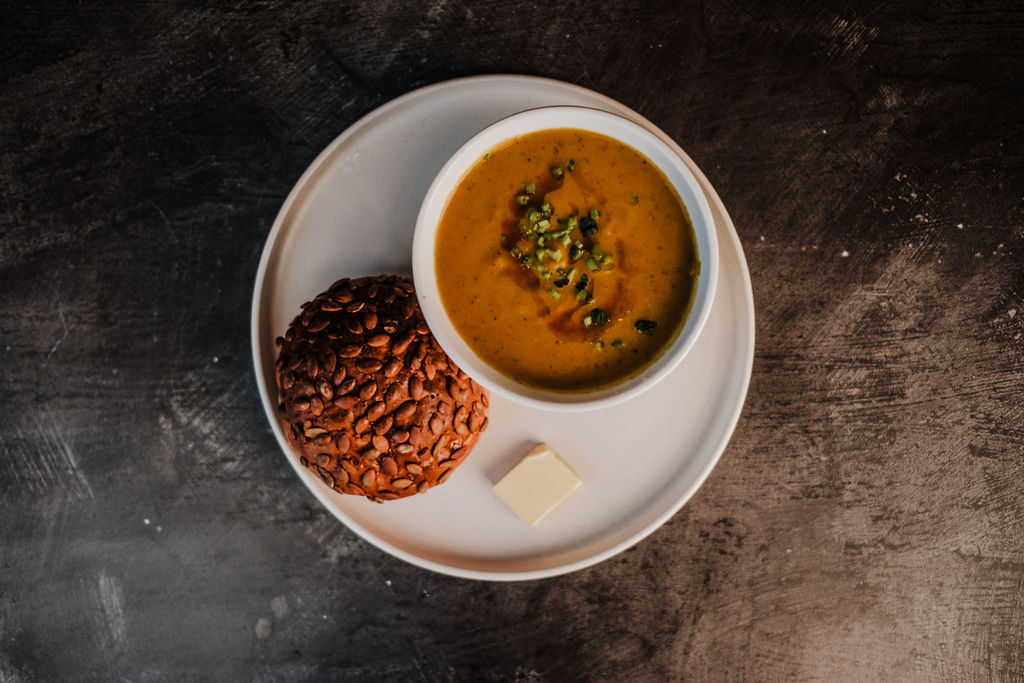
One of our seasonal Walled Garden Soups of the day. Photo by Claire McClean.
Seasonal Eating & Preservation
In a time when people have a heightened awareness of the impact of what we eat, how it is produced and how it is transported, we’re on a mission to show people that great food and drink can be done with a clear conscience.
“Seasonal eating” has become a much-overused phrase in the food and drink world, so why is it so important?
By eating what is in season means you’re having it when it’s at it’s very best, it’s freshest. There are a number of benefits to this; Fresher food has greater nutritional value, it tends to support local farmers and the local economy, it’s transported less distance so has an environmental benefit, and, possibly most important of all, it tastes better.
Seasonal eating is not only about eating what’s currently in season, it’s also about preserving the seasons.
When there’s a glut of something there’s a number of traditional techniques that can be used to prolong the usable season of fruits, vegetables, herbs, spices and meats as well as altering and enhancing their flavour profiles. These include drying, curing, smoking, pickling and fermenting, and some more expert techniques such as clamping, ageing in bees wax and dry ageing.
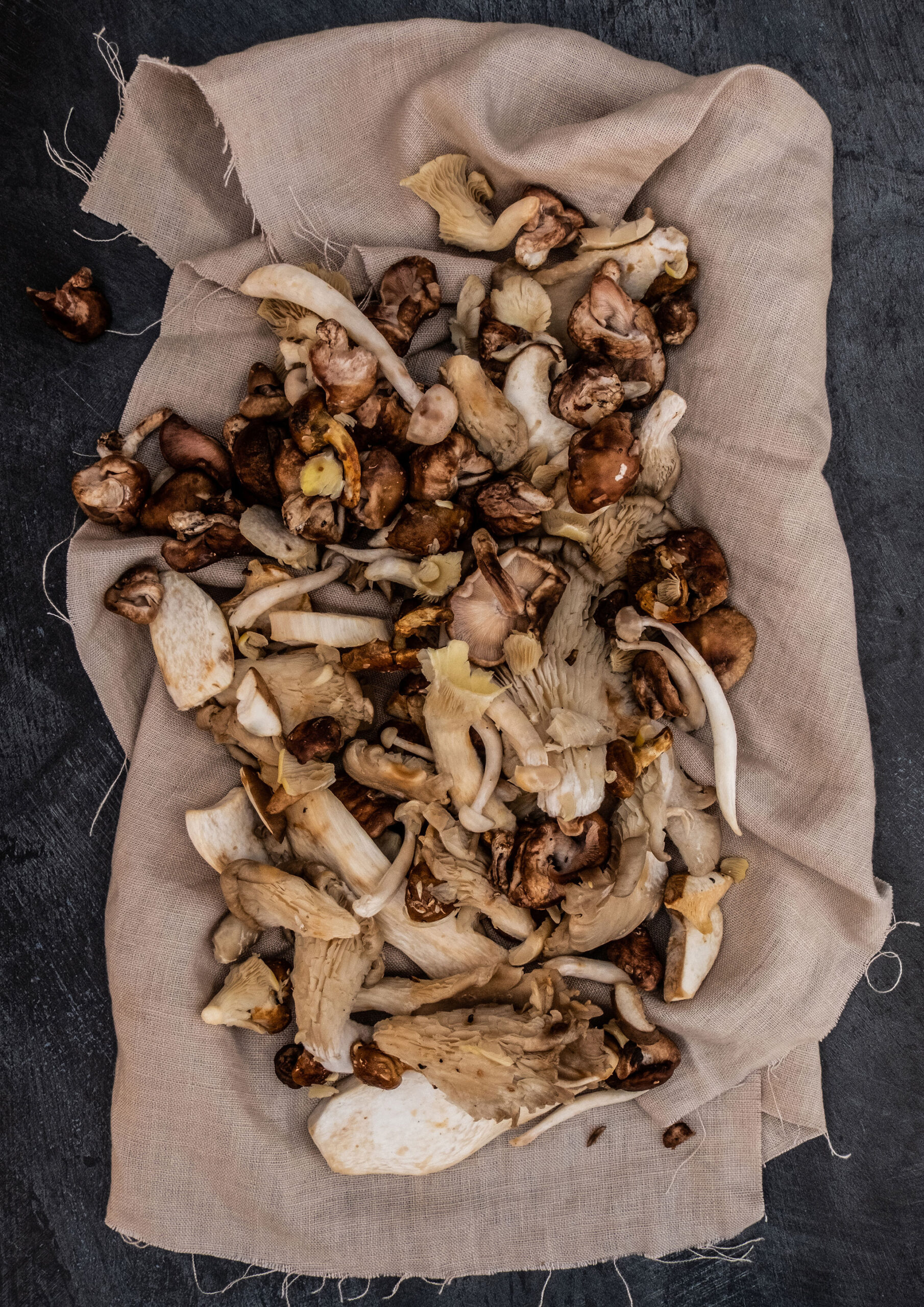
Wild Mushrooms from Harewood. Photo by Claire McClean.
At this time of year preservation techniques are particularly valuable when there’s not much growing in the gardens, other than the odd hardy brassica and root vegetable. In the past, the ability to store and preserve food over the fallow, cold winter months was literally a matter of life and death. It ensured supplies of food with enough nutritional value to keep you going until the more productive Spring time came around.
These techniques have become synonymous with contemporary cuisine as they can change and enhance flavour profiles and help to bring dishes together. Scandinavian and Japanese cuisine are both pioneers of these techniques, we put them in to use here at Harewood. Next time you’re able to visit the inside of the Courtyard Café, see the shelf behind the coffee machine. This is “Josh’s Fermentation Station”, and whilst it looks like the experimentation of a mad scientist, it will all taste delicious and be used on our menus throughout the year.












